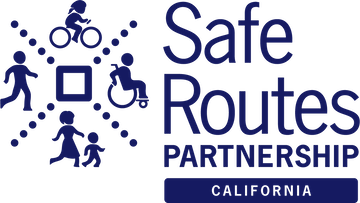The Safe Routes Partnership is excited to announce that we are sponsoring a bill in the California legislature this session that would require complete streets improvements to be made on state highways within California. The full press release is below and linked to here.
Senator Wiener Introduces Complete Streets Bill to Ensure State Highways that Run Through Local Communities Are Safe and Usable by Transit Riders, Pedestrians, and Cyclists
Sponsored by the California Bicycle Coalition, Safe Routes Partnership, California Walks, and the American Heart Association/American Stroke Association, SB 760 will require Caltrans to make roads safer for people walking and bicycling
February 22, 2017
“State-owned highways that run through local communities should be designed for safe use by everyone, not just cars,” said Senator Wiener. “For too long, Caltrans has talked about complete streets as a policy, but hasn’t actually delivered these improvements in its projects. SB 760 will ensure that as we rehabilitate roads that run through the centers of our towns and cities, we are prioritizing active transportation uses like walking, bicycling, and riding public transportation. Streets designed for all residents create safer and healthier communities.”
Caltrans owns and maintains 50,000 lane-miles of state roads, investing $2.4 billion annually. State-owned roadways include city and neighborhood surface streets and small-town main streets that carry local traffic as well as people on foot, bike, and transit. Examples of state-owned roads in urbanized areas include:
- San Francisco: Van Ness Avenue and Lombard Avenue (Highway 101), 19th Avenue (Highway 1), and Sloat Boulevard (Highway 35)
- Berkeley: San Pablo Ave (Hwy 123) and Ashby Ave (Hwy 13)
- Los Angeles County: Santa Monica Blvd (Hwy 2), Hawthorne Blvd (Hwy 107), and Alameda St (Hwy 47)
- San Bernardino: Foothill Blvd (Hwy 66)
- Bakersfield: 23rd and 24th Streets (Hwy 178)
- West Sacramento: Jefferson Blvd (Hwy 84)
“Caltrans has a long history of working to make California a better place to drive,” Jeanie Ward-Waller, Policy Director for the California Bicycle Coalition. “We’ve been pushing the agency to make our state roads better for people biking and walking for years, and while we’ve seen progress in planning and goal-setting, that progress hasn’t been realized yet in better projects on the ground. SB 760 will push Caltrans to follow through in project implementation and to be a leader in designing safe streets.”
Caltrans adopted a complete streets policy in 2008 providing that the agency would ‘consider’ safer road design for people walking and bicycling in all projects. More recently, in 2015, the agency adopted goals to triple bicycling and double walking statewide by the year 2020. However, Caltrans has not made a serious effort to implement these goals as part of all road rehabilitation and maintenance work. Instead, Caltrans continues to prioritize the movement of car and truck traffic through cities and towns, increasing congestion and air pollution in neighborhoods rather than creating streets that are safe, convenient, and inviting places to walk, bike, and use public transit. For example, El Camino Real (SR-82) in the Bay Area cuts through Peninsula communities and inexplicably lacks sidewalks in numerous locations, let alone much-needed bicycle lanes and improved crossings for pedestrians and transit users.
“With pedestans and cyclists comprising over a quarter of all traffic fatalities in the state, we need Caltrans to do its part and to take action to make our streets safer for all road users,” said Tony Dang, Executive Director, California Walks.
SB 760 allocates 3% of state road maintenance funds over the next two years to be used for walking and biking improvements until Caltrans can demonstrate that it is meeting its own complete streets goals.
“SB 760 will make our streets safer for children walking and bicycling to school and in daily life,” said Bill Sadler, California Senior Policy Manager, Safe Routes Partnership. “Many schools, parks and other community destinations are located along state highways and busy roads, and children and their families face unsafe conditions trying to access them. This bill will help address these challenges by creating safer crossings, sidewalks and bicycle facilities along state highways that benefit children across the state who walk and bike to school every day, and encourage many more to do so.”
SB 760 changes the guidelines dictating how State Highway funds are spent to ensure that improving accessibility, reducing vehicle miles traveled, and promoting public health are top considerations. The current primary priority for Caltrans is the operation, maintenance, and rehabilitation of state highways. The bill also establishes a Division of Active Transportation within Caltrans, which will be charged with adhering to complete streets performance measures.
“Government leaders can help people live healthier lives by implementing policies that support healthy behaviors like walking,” said Joe Aviance, aka “Papa Joe,” an American Heart Association volunteer who took to the streets and walked as a first step to losing 250 pounds. “I was 450 pounds when I decided to make a change for the better and started walking. Fortunately for me, I live in a neighborhood that has sidewalks and pedestrian-friendly streets so I feel comfortable going out to walk, sometimes for miles at a time, and the sidewalks became my treadmill. Access to safe, walkable streets is not an available option for most people, especially for most communities of color where investment is sorely needed. Creating more complete streets in all neighborhoods will help encourage people to take the first step to living a longer, healthier life.”


